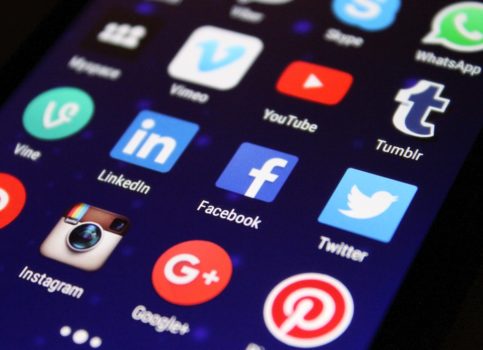If Twitter is Struggling with App Monetisation, What Hope Do the Rest Have?
by Lindsay Rowntree on 28th Sep 2016 in News

App developers endeavouring to monetise their creations face a challenge. One that, for Elad Natanson, founder and CEO, Appnext (pictured below), was definitely evident at this year's dmexco conference. Here, Natanson writes exclusively for ExchangeWire about how Twitter's struggle to monetise their app points to a wider industry issue, and how it can be overcome.
dmexco is arguably Europe’s leading conference for advertising and marketing technology. In the eight years that the event has been around, it has continued to grow and attract executives, companies, and marketers by the tens of thousands, covering a wide range of topics from newest business tactics to how businesses can navigate new platforms.
The event also attracts the crème of industry experts, many of them participating in panels, delivering keynotes, and joining a variety of events. One of the events we were quite intrigued to participate in was the joint interview with Twitter CEO, Jack Dorsey and WPP CEO, Sir Martin Sorrell – two of the leading players in the digital and advertising worlds. In their conversation, Sorrell asked: “Why is it that Twitter, frankly, is not profitable, loses money, has lost money for years and can’t monetise effectively, despite the support we’ve shown?”
I am sure that many developers and marketers struggling with similar monetisation worries would take some solace from this exchange; but the reality is the challenge of app and website monetisation is perhaps the biggest problem in the digital economy. And no one seems to know what to do about it.
There is no shortage of apps, or an interest in new apps, so that’s not the problem. At least 1,000 new apps are introduced to Apple’s App Store, alone, every day and 50 billion Android apps were downloaded in 2015. Investment is not short either. In 2014, WPP invested USD$150m (£116m) in Twitter campaigns and last year it spent USD$240m (£185m) – a 60% increase. This year, it’s on track to clock a further 46% increase in Twitter spend – USD$350m (£270m). But, despite this, many people involved in the app economy, including the guys at Twitter, are still trying to work out how to turn this interest and investment into tangible profit.

Elad Natanson, Founder & CEO, Appnext
Many have turned to advertising as a way to monetise, but the rise of ad blockers is causing some major disruption in that space. There is also the general reluctance of users to engage with the ads in a way that yields significant results for advertisers, as evidenced by the incredibly low click-through rates for online ads. Native advertising, however, is proving to be an increasingly effective approach. Advertisers are building native adverts that complement their app and website’s look and feel. These adverts are less invasive than other traditional ads and, perhaps most importantly, do not interrupt the user’s experience or suggest that they need to alter their journey. According to one of the latest studies done by OPA (Online Publishers Association), 53% of the total amount of people surveyed assured that they felt a lot more attracted by this type of advertising, as opposed to the rest of the traditional types of advertising.
Advertisers and developers are also exposed to more data on app usage and user habits than ever before. There is access to granular information on frequency and duration of use by individual users, as well as with which parts of the app individual users engage. Developers can build an incentive-based monetisation model based on this data. Users would be rewarded for their interaction and app owners can reap the reward.
This data, combined with deep linking technology, can be used to push individual users towards the best experience for them within an app. They won’t have to navigate pages that they don’t want to or endure experiences they are not too keen on. This data can also be used, through app distribution platforms, to market and remarket apps to the right audiences. With the growing number of abandoned apps, there must be additional attention paid, not only to getting users to download apps, but also to keeping the app and experiences associated with it at the forefront of users’ minds.
It is very important for developers and marketers to view their apps and websites just as users would. Think of the habits users form, the various influences on those habits, and how you can make the most of this information. The app economy is more competitive than ever, which means the stakes are very high. Monetising your app might seem like a herculean task, especially with the likes of Twitter struggling, but it is not an impossible task.
Ultimately, the golden ticket is being able to present the right opportunities to the right people at the right time. The importance of relevant offers and highly optimised units cannot be overstated. Using the data gathered, and the technology available, it is very possible to continue to give users the experiences they will enjoy, while you keep earning, by providing those experiences.








Follow ExchangeWire